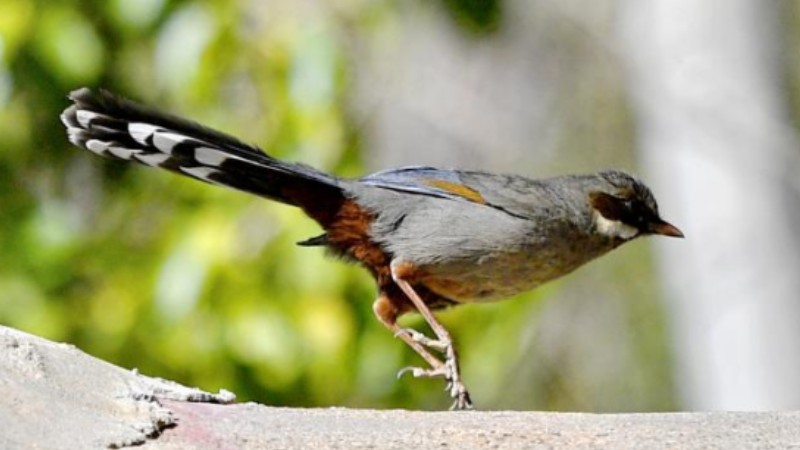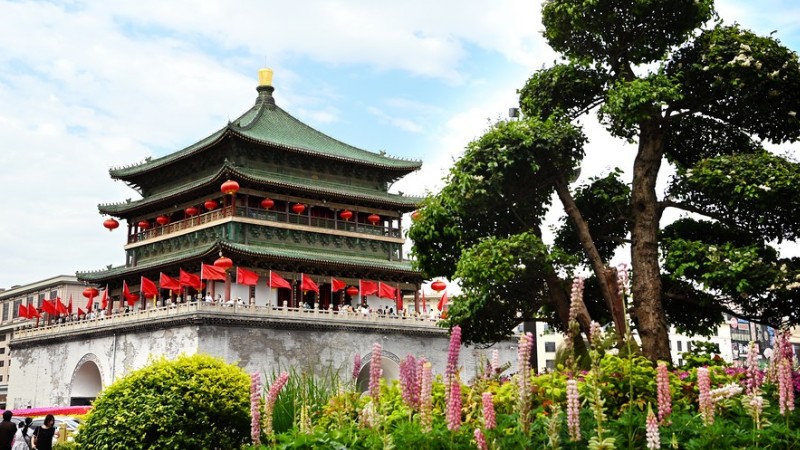Only pair of giant pandas in southern hemisphere enjoys life at Adelaide Zoo
Wang Wang and Fu Ni, the only pair of giant pandas residing in the southern hemisphere, are enjoying life at the Adelaide Zoo, Dr. Phil Ainsley, the zoo’s director, said in an interview with People's Daily Online Australia.
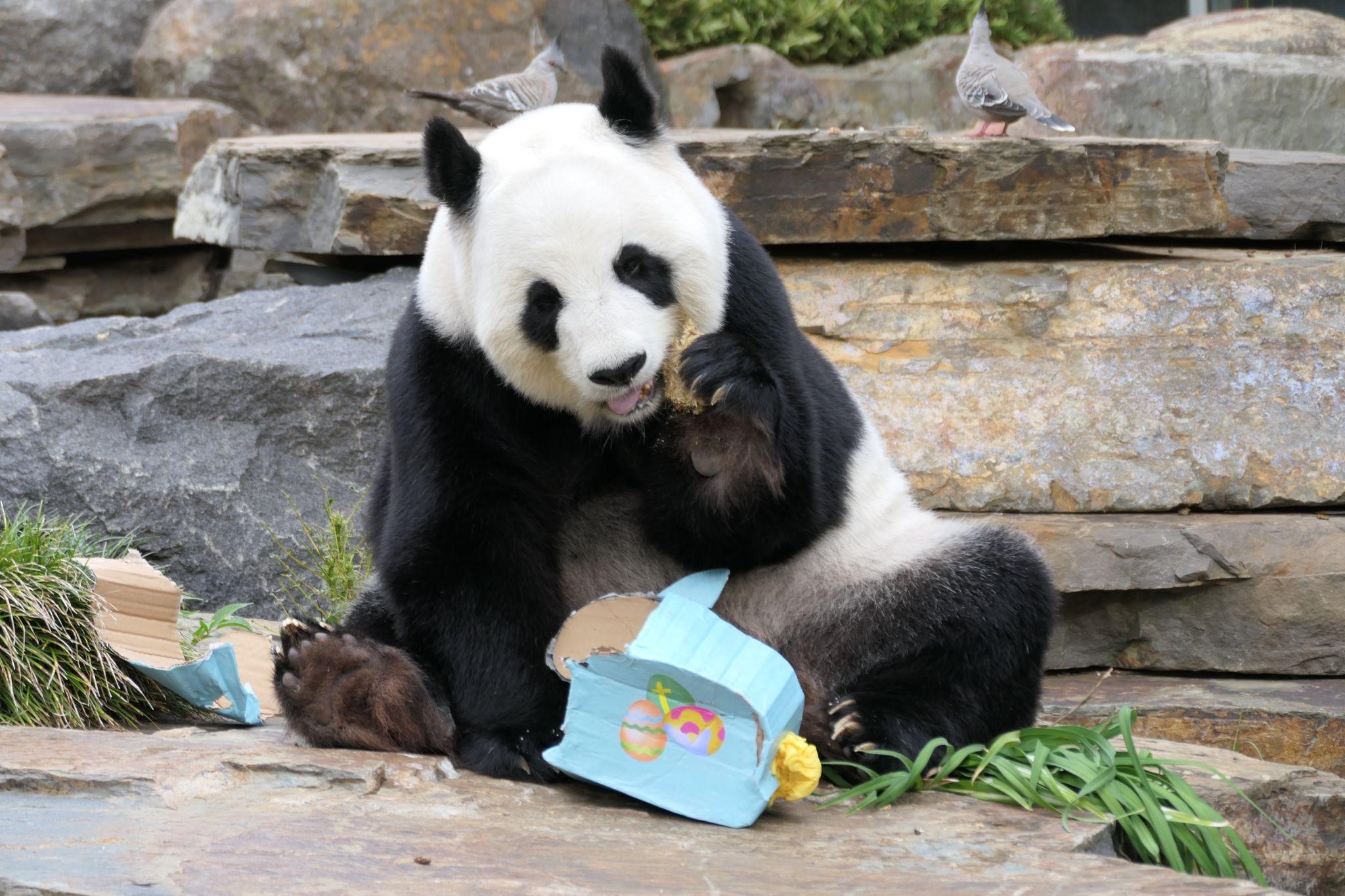
Fu Ni eats a piece of cake during Easter this year at the Adelaide Zoo in Australia. (Photo courtesy of Adelaide Zoo)
Special bamboo and panda cakes
Wang Wang and Fu Ni relocated from China to Adelaide Zoo in South Australia, on Nov. 29, 2009, and have been among the zoo's main attractions for almost 14 years.
According to Ainsley, the zoo built a bamboo forest especially for the pair in 2008, in preparation for the arrival in 2009, because the climate there differs greatly from the pandas’ natural habitat in China, with hotter and drier summers and milder winters.
The zoo has also created temperature and humidity-controlled indoor areas for the pair. It even offers “cold rocks” to the pandas so that they can stay cool on hotter days, which “they definitely like.”
Due to Australia's customs restrictions, the zoo cannot import bamboo from China as their diet, like many other zoos around the world that house giant pandas, do.
“We're very lucky that we have another partnering group that we work with, SA Water. They have provided us with nearly 15 hectares of land, where we grow our own bamboo, and we grow 15 different varieties of bamboo,” said Ainsley, adding that there’s a horticulturalist dedicated to maintaining the plantation and bringing fresh bamboo to the pandas every day. As a result, Wang Wang and Fu Ni enjoy a diverse selection of five to six bamboo types daily.
Fruits and vegetables are essential components of their diet, too. Ainsley said Wang Wang and Fu Ni have a particular fondness for pears, apples, and carrots, with their preferences changing throughout the year.
Every week, Wang Wang and Fu Ni are treated to a special "panda cake," an artificial supplement to their bamboo diet. “We follow the recipe that's been provided by China,” said Ainsley. “They share that with all of the partners who work around the world of giant pandas, which is amazing.”
Like other giant pandas, Wang Wang and Fu Ni spend a lot of time sleeping and eating. However, the zoo also provides them with a variety of activities as part of an enrichment program. In addition to roaming the recreated panda forest with Fu Ni, Wang Wang has had training to strengthen his core and leg muscles, which “definitely helped with him being able to climb trees and get ready for mating as well.”
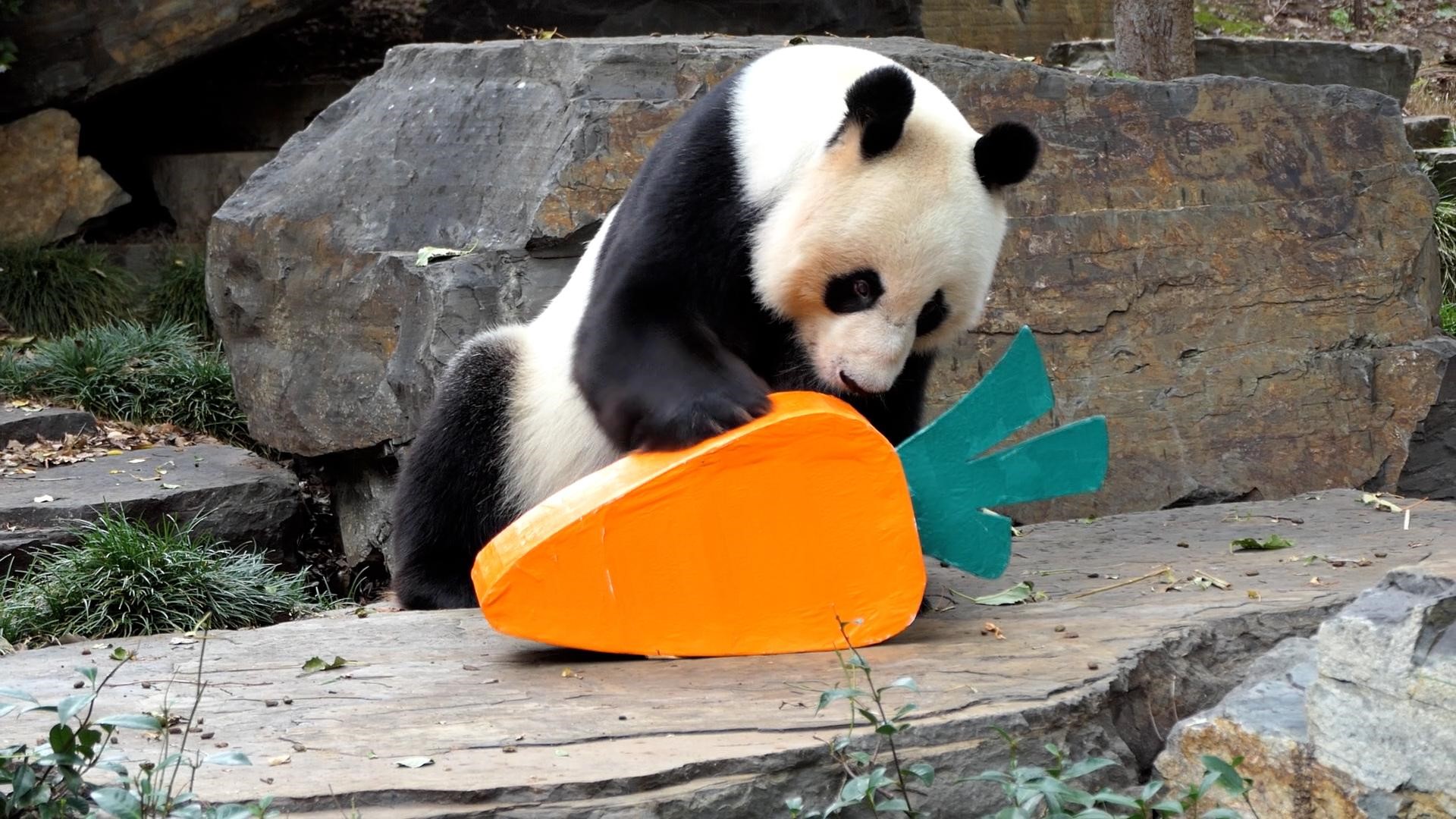
Wang Wang eats a panda cake during Easter this year at Adelaide Zoo in Australia. (Photo courtesy of Adelaide Zoo)
Monitored 24/7
Wang Wang and Fu Ni receive round-the-clock monitoring and care provided by a specialized team of panda keepers, volunteers stationed in the bamboo forest, nighttime security, and surveillance cameras. Ainsley said that he would be informed immediately in case of an emergency, and the zoo also has a General Manager of Assets who lives there. “So there's always someone present,” with at least two keepers with the giant pandas all the time.
The habitats and exhibits for Wang Wang and Fu Ni were meticulously planned after consultation with their Chinese counterparts, down to the heights of the walls and depths of the moats, to assure the security of both the giant pandas and the visitors.
The health of Wang Wang and Fu Ni is a top priority. Ainsley said that a veterinary team at the zoo keeps an eye on the animals' well-being. This team performs blood tests, weighs the giant pandas, examines their teeth, and even used ultrasound technology to check on Fu Ni's pregnancy to ensure she was healthy.
Every year, the zoo sends reports to China, and they consistently receive positive comments from their Chinese counterparts.
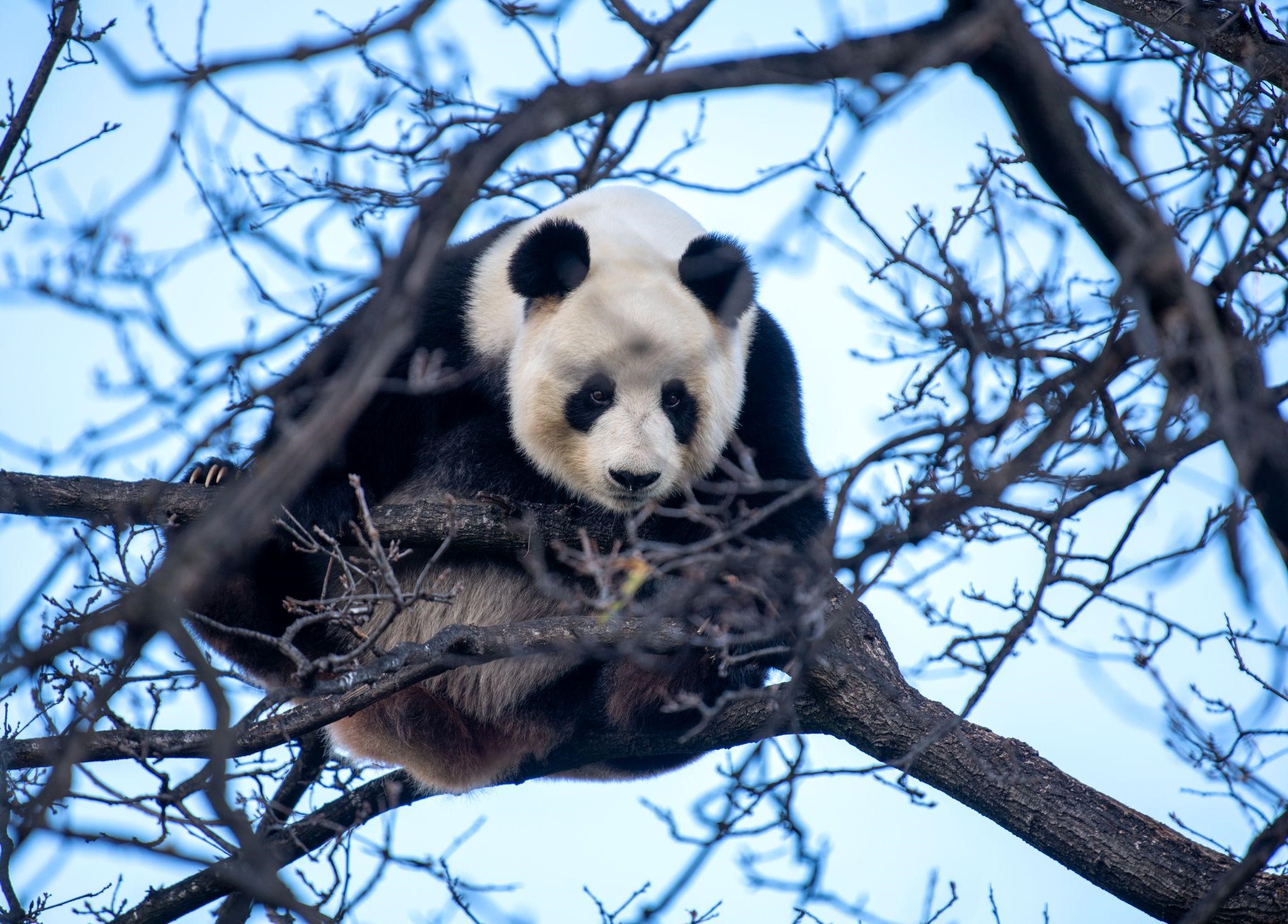
Fu Ni climbs a tree at the Adelaide Zoo on August 7, 2021. (Photo courtesy of Adelaide Zoo)
Breeding challenges
While Wang Wang and Fu Ni have been thriving in their adopted home at the zoo, their stay in Australia has not been without its challenges.
Ainsley said that Wang Wang and Fu Ni have reacted to Adelaide's flower and tree pollen, which is different from that of China's native trees, in a manner akin to the hay fever that many Australians experience in spring. To address this, the veterinary team has utilized medication to assist control the allergies and make sure the pandas can get used to the environmental pollen.
On the other hand, despite efforts and close collaboration with their counterparts at China panda bases, the zoo's recent attempt at artificial insemination for breeding the giant pandas was unsuccessful. This is the 10th unsuccessful breeding attempt, leaving the team at the zoo disheartened.
Ainsley explained that the reproduction of giant pandas is an exceptionally challenging process. “There's a very narrow window of shorter than three days each year when Fu Ni is receptive to Wang Wang,” he said.
Nevertheless, they have contributed to the understanding of giant panda reproduction in the southern hemisphere. Ainsley said Wang Wang and Fu Ni have demonstrated that giant pandas can relocate from the northern to the southern hemisphere, that they are capable of breeding, that their reproductive cycles may change as needed, and that they can adapt to life in the southern hemisphere.
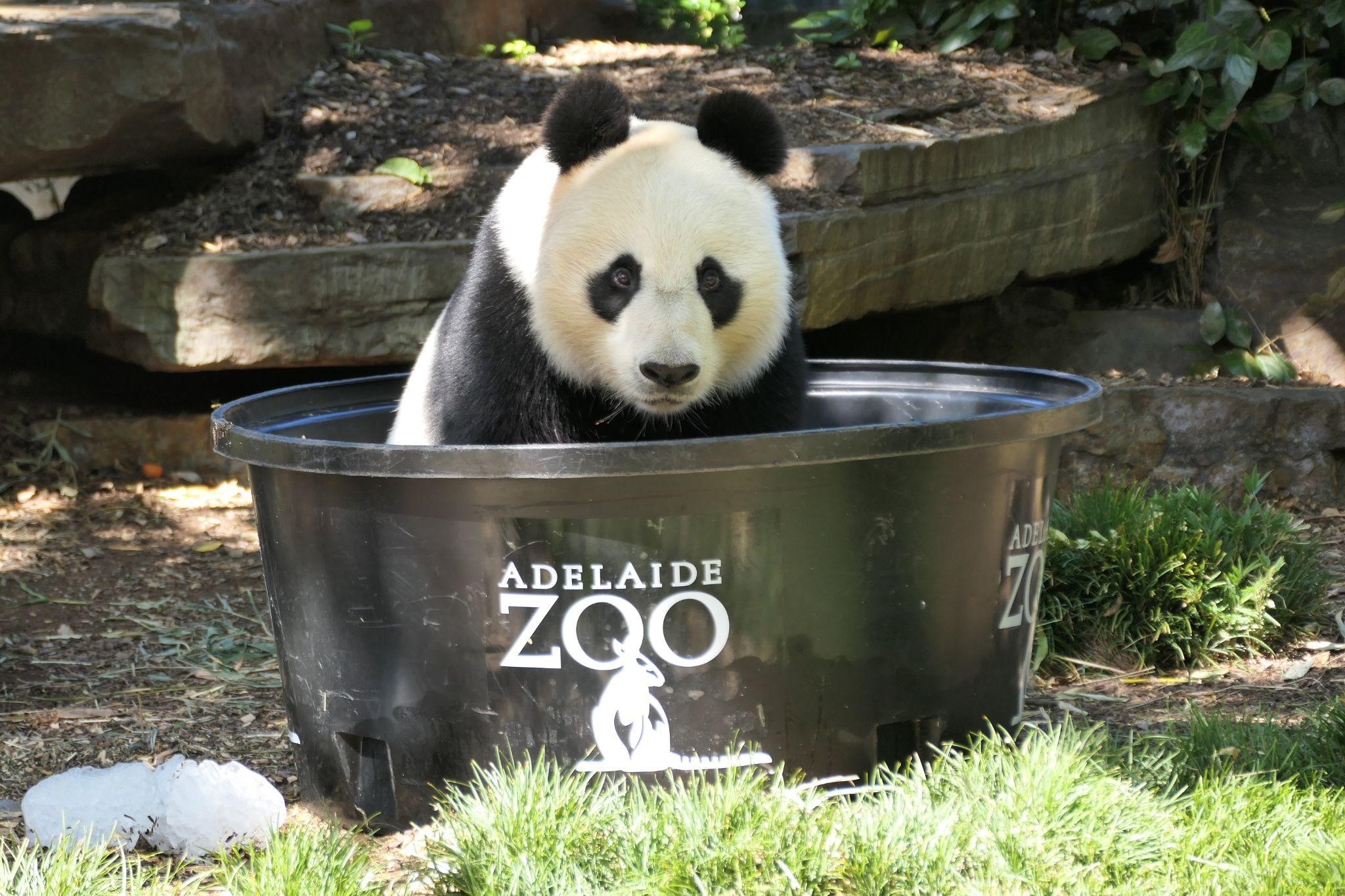
Wang Wang rests in a basin at the Adelaide Zoo. (Photo courtesy of Adelaide Zoo)
“A big drawcard”
Since Wang Wang and Fu Ni's arrival, the number of annual visitors to the zoo has increased from roughly half a million to over four and a half million. Many visitors flock to the zoo to witness the enchanting presence of the giant pandas. “They're definitely a big drawcard,” said Ainsley.
Every year, as part of their curriculum, about 50,000 students from local schools visit the zoo to meet the pandas. This has allowed students to delve into the fascinating world of Chinese pandas, and broadened their understanding of China itself.
Ainsley also said that the presence of giant pandas at the zoo symbolizes a profound friendship between China and Australia.
Photos
Related Stories
Copyright © 2023 People's Daily Online. All Rights Reserved.






